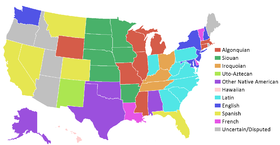Possible new states

Puerto Rico
Puerto Rico, an unincorporated U.S. territory, refers to itself as the "Commonwealth of Puerto Rico" in the English version of its constitution, and as "Estado Libre Asociado" (literally, Associated Free State) in the Spanish version. As with all U.S. territories, its residents do not have full representation in the United States Congress. Puerto Rico has limited representation in the U.S. House of Representatives in the form of a Resident Commissioner, a delegate with limited voting rights in the Committee of the Whole House on the State of the Union, but no voting rights otherwise.
A non-binding referendum on statehood, independence, or a new option for an associated territory (different from the current status) was held on November 6, 2012. Sixty one percent (61%) of voters chose the statehood option, while one third of the ballots were submitted blank.
On December 11, 2012, the Legislative Assembly of Puerto Rico enacted a concurrent resolution requesting the President and the Congress of the United States to respond to the referendum of the people of Puerto Rico, held on November 6, 2012, to end its current form of territorial status and to begin the process to admit Puerto Rico as a State.
Another status referendum was held on June 11, 2017, in which 97% percent of voters chose statehood. Turnout was low, as only 23% of voters went to the polls, with advocates of both continued territorial status and independence urging voters to boycott it.
On June 27, 2018, the H.R. 6246 Act was introduced on the U.S. House with the purpose of respond to, and comply with, the democratic will of the United States citizens residing in Puerto Rico as expressed in the plebiscites held on November 6, 2012, and June 11, 2017, by setting forth the terms for the admission of the territory of Puerto Rico as a State of the Union. The act has 37 original cosponsors between Republicans and Democrats in the U.S. House of Representatives.
Washington, D.C.
The intention of the Founding Fathers was that the United States capital should be at a neutral site, not giving favor to any existing state; as a result, the District of Columbia was created in 1800 to serve as the seat of government. As it is not a state, the district does not have representation in the Senate and has a non-voting delegate in the House; neither does it have a sovereign elected government. Additionally, prior to ratification of the 23rd Amendment in 1961, district citizens did not get the right to vote in Presidential elections.
Some residents of the District support statehood of some form for that jurisdiction – either statehood for the whole district or for the inhabited part, with the remainder remaining under federal jurisdiction. In November 2016, Washington, D.C. residents voted in a statehood referendum in which 86% of voters supported statehood for Washington, D.C. For statehood to be achieved, it must be approved by Congress.
Others
Other possible new states are Guam and the U.S. Virgin Islands, both of which are unincorporated organized territories of the United States. Also, either the Commonwealth of the Northern Mariana Islands or American Samoa, an unorganized, unincorporated territory, could seek statehood.
Comments
Post a Comment